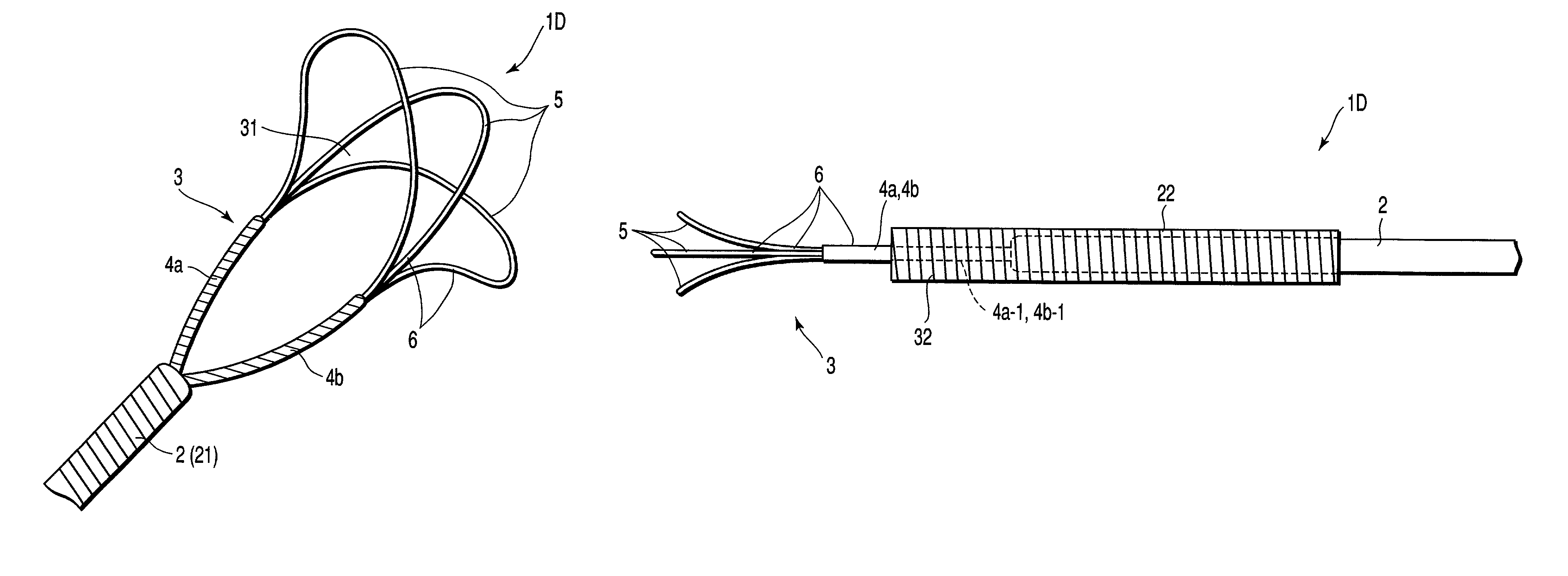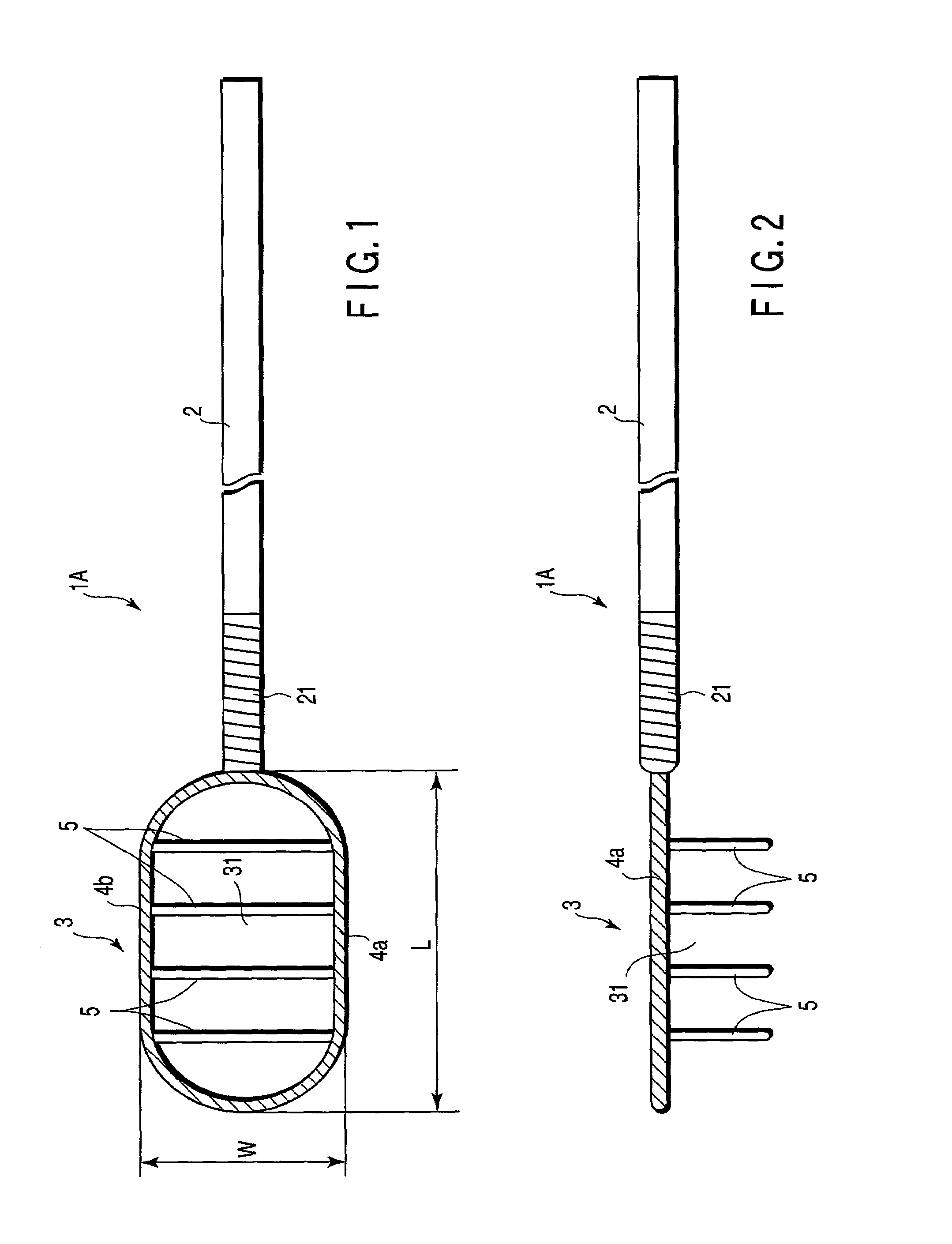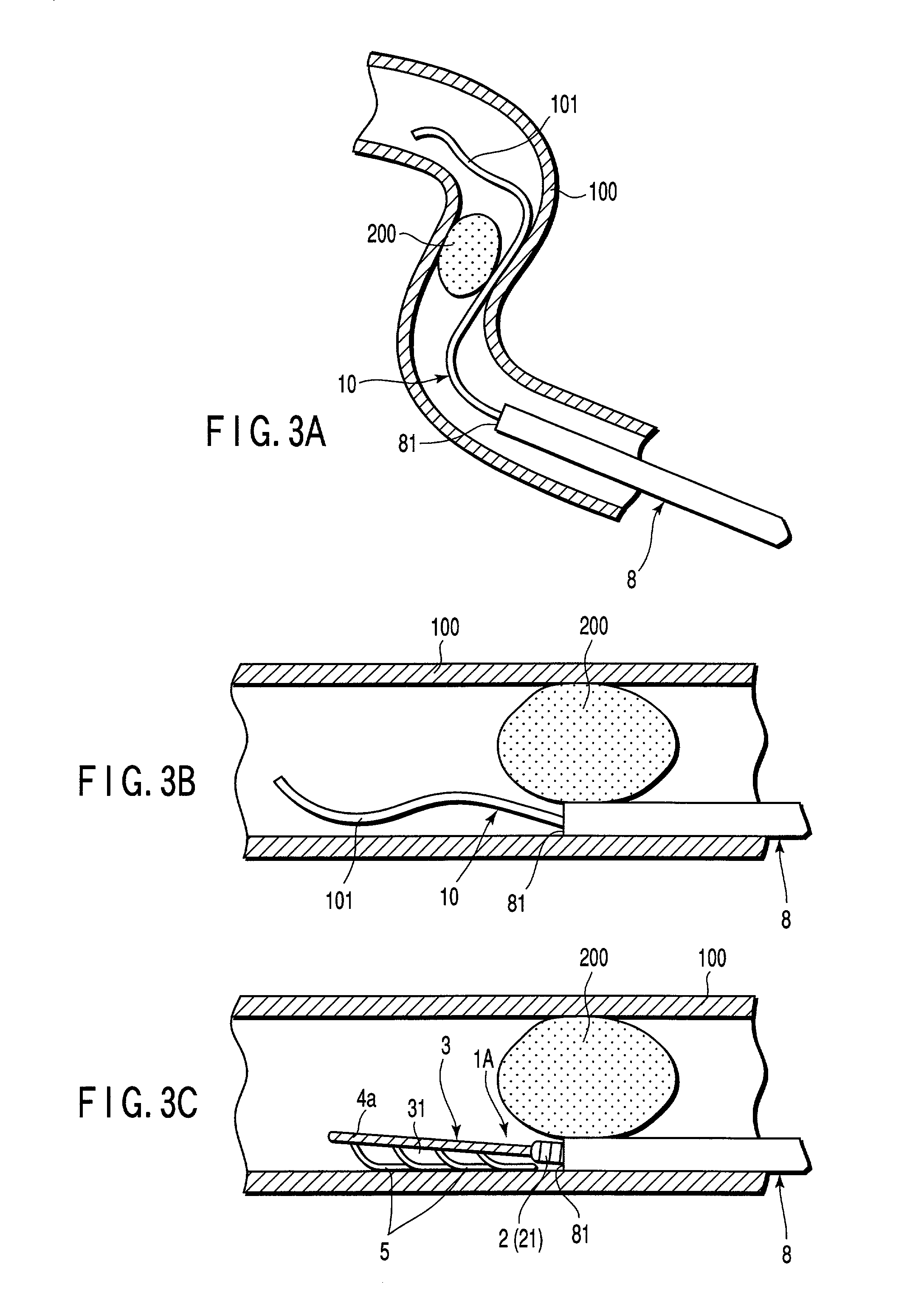Intravascular obstruction removing wire and medical instrument
- Summary
- Abstract
- Description
- Claims
- Application Information
AI Technical Summary
Benefits of technology
Problems solved by technology
Method used
Image
Examples
first embodiment
[0036]First, the first embodiment will be described with reference to FIGS. 1 to 3D. In the following description, the upper side and lower side are respectively called “the proximal end” and “distal end” in FIGS. 1 and 2. The right side and left side are respectively called “the proximal end” and “distal end” in FIGS. 3A to 3D. Generally, the proximal end side of the wire is maintained outside the human body, and the distal end thereof is inserted in a blood vessel of the human body.
[0037]An intravascular obstruction removing wire 1A shown in FIGS. 1 and 2 serves to trap and remove an obstruction (to be referred to as “embolus” hereinafter) such as a thrombus or clot in the blood vessel, that causes embolism.
[0038]The intravascular obstruction removing wire 1A has an elongate wire body 2 and a trapping portion 3. The trapping portion 3 is formed or provided at the distal end of the wire body 2 and can trap an embolus in the blood vessel. The wire body 2 has appropriate rigidity and...
third embodiment
[0087]An intravascular obstruction removing wire according to the present invention will be described with reference to FIGS. 7 to 10.
[0088]An intravascular obstruction removing wire 1C according to this embodiment is substantially identical to that of the first embodiment except that the shape of its trapping portion 3 is different.
[0089]In the trapping portion 3, non-branched wire portions 4a and 4b and filament portions 5 are formed of a plurality of (six in this embodiment) loop wires 6 having loop portions of almost the same sizes which are formed at the distal end of a wire body 2 to form loops (rings). The proximal ends of the loop wires 6 are overlaid vertically, i.e., in one direction, as best shown in FIG. 9. As the proximal ends of the respective loop wires 6 enter a catheter 8, they are gradually displaced in an inner direction to narrow the interval between them. Thus, forces that fasten an embolus 200 inwardly act, so the embolus 200 can be gripped between the opposite...
fourth embodiment
[0097]the present invention will be described with reference to FIGS. 11 to 13.
[0098]As shown in FIGS. 11 and 13, a trapping portion 3 in an intravascular obstruction removing wire 1D according to this embodiment is formed of a plurality of (three in this embodiment) loop wires 6, in the same manner as in the third embodiment. With the loop wires 6, non-branched wire portions 4a and 4b are formed by twisting the proximal end portions of the loop wires, having a predetermined length s as shown in FIG. 12. More specifically, the proximal end portions on one side of the plurality of loop wires 6 are twisted integrally to form one wire portion 4a, while the proximal ends on the other side are thereof twisted integrally to form the other wire portion 4b. Each of wire portions 4a, 4b has a length s as shown in FIG. 12.
[0099]Of three filament portions 5, one located at the center is located on almost the same plane as the non-branched wire portions 4a and 4b, that is, this filament portion...
PUM
 Login to View More
Login to View More Abstract
Description
Claims
Application Information
 Login to View More
Login to View More - R&D
- Intellectual Property
- Life Sciences
- Materials
- Tech Scout
- Unparalleled Data Quality
- Higher Quality Content
- 60% Fewer Hallucinations
Browse by: Latest US Patents, China's latest patents, Technical Efficacy Thesaurus, Application Domain, Technology Topic, Popular Technical Reports.
© 2025 PatSnap. All rights reserved.Legal|Privacy policy|Modern Slavery Act Transparency Statement|Sitemap|About US| Contact US: help@patsnap.com



